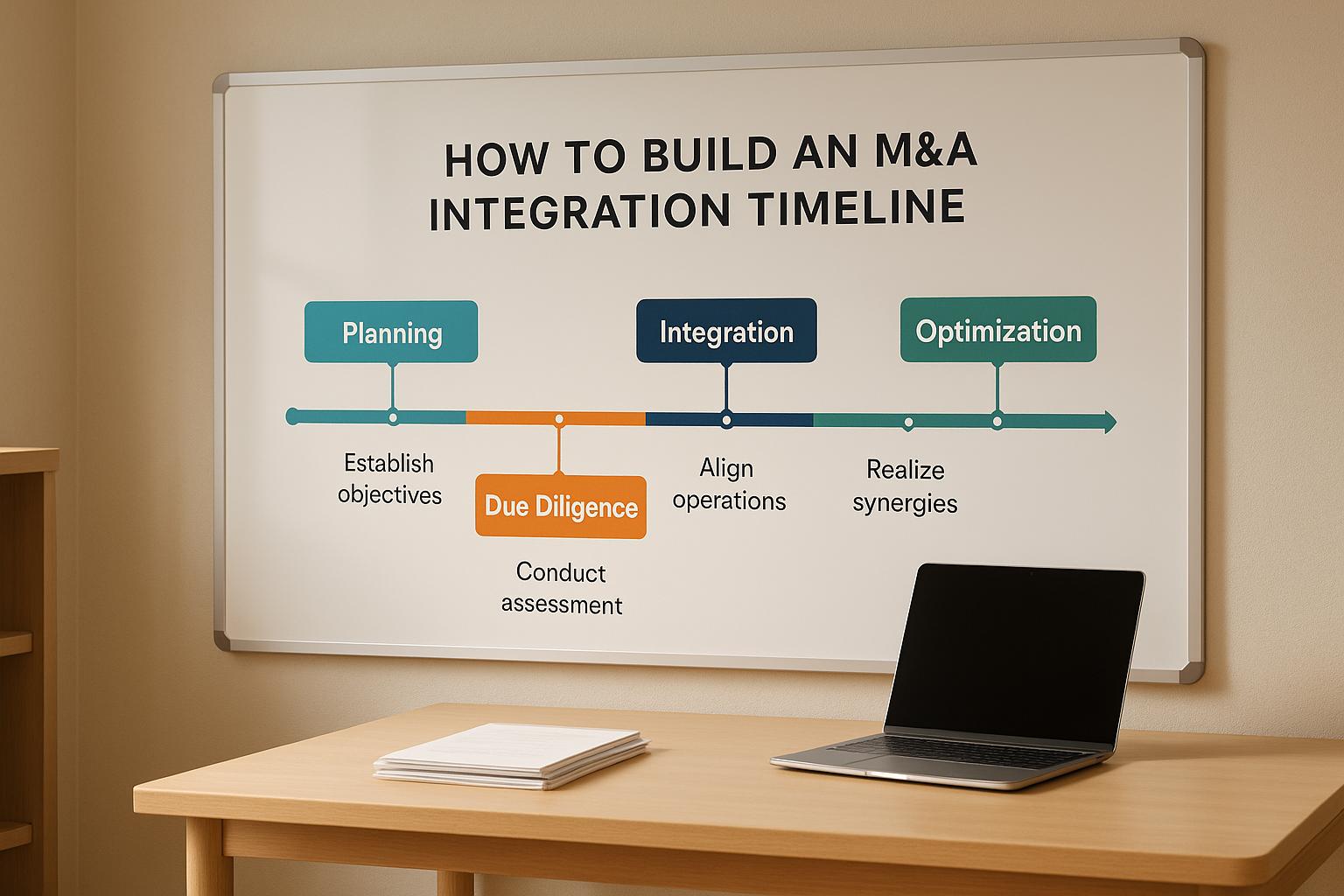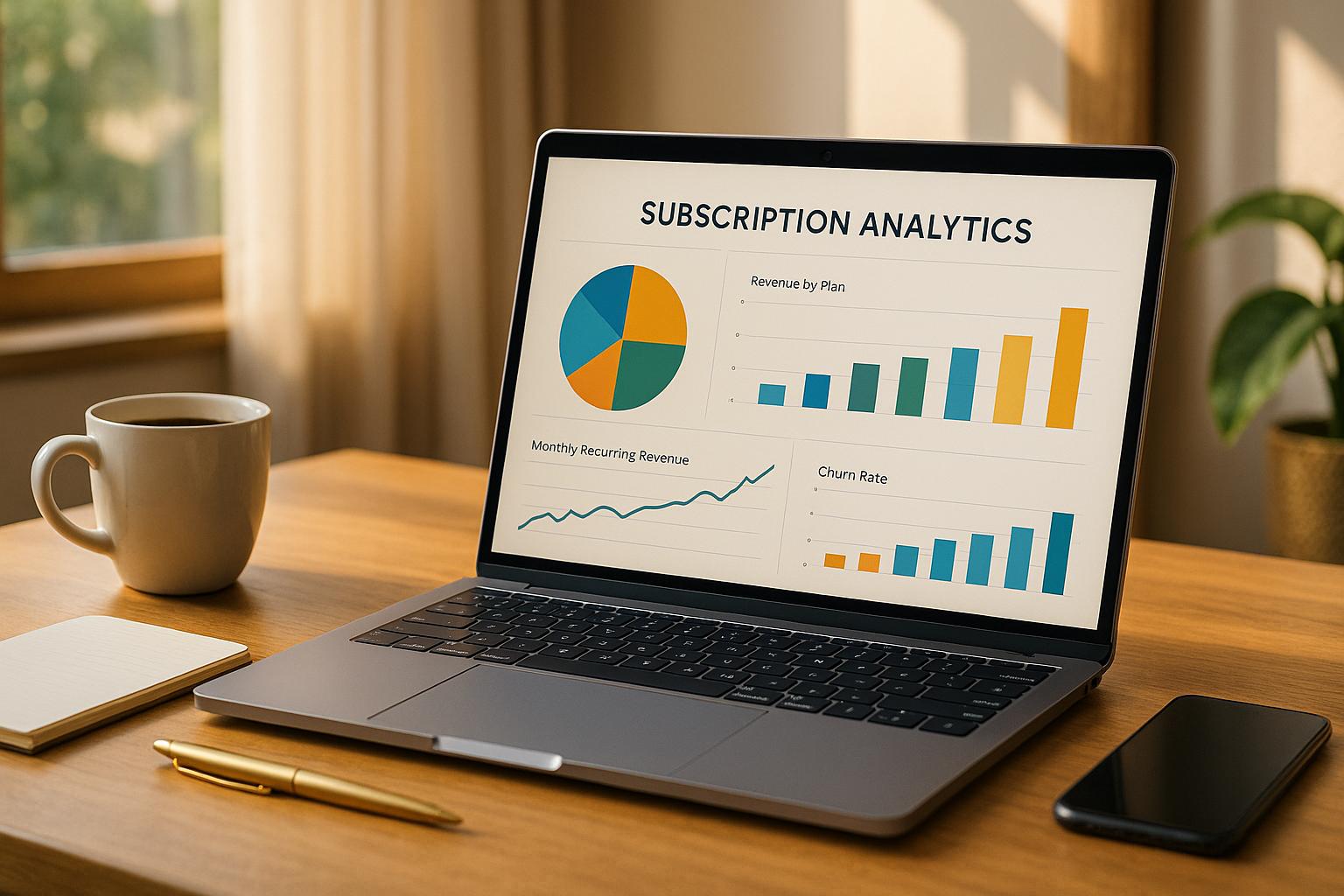Revenue-sharing agreements are essential for SaaS partnerships, defining how revenue is split and responsibilities are shared. Here's a quick breakdown of what to include:
- Revenue Allocation: Define revenue sources and splits (e.g., 70/30).
- Roles: Specify duties for SaaS providers (e.g., product maintenance) and resellers (e.g., sales, marketing).
- Payment Terms: Set schedules, methods, and reporting requirements.
- Dispute Resolution: Include steps for handling disagreements.
- Legal & Tax Compliance: Address tax obligations and liability protection.
Quick Steps:
- Identify parties and responsibilities.
- Define revenue sources and cost-sharing.
- Set clear payment and reporting terms.
- Address legal, tax, and compliance needs.
- Regularly review and update the agreement.
By focusing on clarity, fairness, and flexibility, SaaS companies can create partnerships that benefit both parties.
Revenue Share Agreements (RSA) - A Quick Guide
Key Elements of a Revenue-Sharing Agreement
To create a fair and functional revenue-sharing agreement, certain components are essential. These elements help clarify responsibilities, prevent misunderstandings, and keep operations running smoothly.
Identification of Parties
Clearly defining who is involved and what they are responsible for is crucial. Here's a breakdown:
| Party | Primary Responsibilities |
|---|---|
| SaaS Provider | Maintaining the product, offering technical support, and handling platform updates |
| Reseller | Managing sales, marketing efforts, customer acquisition, and providing first-line support |
Revenue Sources and Distribution
The agreement should specify the revenue streams it covers and how the earnings are divided. For example, a 70/30 split might apply, but this can change based on factors like each party's contributions, market conditions, risk levels, customer support, and marketing investments [1].
Cost Sharing and Duties
Allocating expenses clearly is key to avoiding disputes. Here's an example of how costs might be divided:
| Expense Type | SaaS Provider | Reseller |
|---|---|---|
| Marketing Campaigns | 60% | 40% |
| Support Infrastructure | 100% | 0% |
Payment and Reporting Procedures
Set clear guidelines for payments and reporting. This includes:
- Payment schedules (e.g., monthly or quarterly)
- Reporting requirements
- Methods for tracking and sharing revenue data
Typically, payments are due within 30 days after reports are submitted. Standardized reporting templates and regular updates ensure both parties have access to accurate financial data for decision-making.
Once these elements are in place, the next step is to finalize the process and terms of the agreement.
Steps to Create a Revenue-Sharing Agreement
Start by clearly defining the scope and terms of the arrangement. Your agreement should include:
| Component | Details to Include |
|---|---|
| Revenue Sources | The specific products or services involved |
| Distribution Method | How revenue will be split and calculated |
| Payment Timeline | Payment schedule and transfer methods |
| Performance Metrics | Key metrics to measure success |
It's also important to clarify whether the sharing applies to gross or net revenue and outline any expenses that can be deducted before calculating the shares [1].
Once these terms are set, focus on the legal and tax framework to ensure both parties are protected.
Legal and Tax Considerations
- Tax Obligations: Clearly state which party is responsible for reporting and paying taxes on the shared revenue.
- Compliance Requirements: Make sure the agreement aligns with local laws governing business partnerships.
- Liability Protection: Include clauses to reduce legal risks for all involved.
For complex matters, such as VAT or international tax treaties, consult a tax professional to ensure compliance [2].
Review and Agreement Process
The final stage involves drafting, reviewing, and formalizing the agreement.
- Initial Draft Review: Prepare the draft, making sure to include detailed appendices for technical and reporting requirements.
- Negotiation Period: Allow time for discussions and adjustments to reach mutual agreement.
- Final Verification: Have a legal expert review the document to confirm it is enforceable and safeguards everyone's interests.
Once all parties approve, the agreement serves as a solid foundation for collaboration and accountability.
sbb-itb-01010c0
Managing the Revenue-Sharing Agreement
Proper management is crucial for any revenue-sharing agreement. It ensures both parties can navigate changes while maintaining trust and transparency.
Monitoring Revenue Sharing
Use reliable tracking systems to ensure revenue distribution is clear and accurate:
| Monitoring Component | Purpose |
|---|---|
| Automated Tracking Tools | Keep revenue tracking precise and transparent |
| Standardized Reporting Templates | Ensure consistent financial records |
| Performance Analytics | Measure success using key performance indicators (KPIs) |
For instance, automated tracking tools can cut payment disputes by 40% and make reconciliation 60% faster. These tools help SaaS companies streamline operations and build stronger partnerships.
Resolving Disputes and Making Adjustments
Set up clear communication channels to handle disputes. Start with direct discussions, move to mediation if necessary, and conduct quarterly reviews to adjust terms as needed. Always document changes and resolutions to prevent future misunderstandings.
Termination and Renewal Terms
Clear guidelines for ending or renewing agreements help avoid disruptions as partnerships evolve:
| Term Type | Key Components |
|---|---|
| Termination | Written notice (30-60 days), breach conditions |
| Renewal | Performance reviews, updated terms |
| Transition | Data transfer, client communication (30-90 days) |
Plan for ongoing revenue and client transitions after termination to wrap up partnerships smoothly when needed.
Tips for Structuring Revenue-Sharing Agreements
Build in Flexibility for Growth
Revenue-sharing agreements should be designed to handle changes, like shifts in the market or company expansion. A tiered model is a great way to adjust revenue splits as earnings increase:
| Revenue Tier | Partner Share | Review Period |
|---|---|---|
| Up to $100K/quarter | 20% | Quarterly |
| $100K-$500K/quarter | 25% | Semi-annual |
| $500K+/quarter | 30% | Annual |
This structure aligns with partnership growth and ensures the agreement stays relevant. While flexibility is key, maintaining open communication and mutual trust is just as important for long-term success.
Focus on Transparency and Communication
Transparency is the foundation of any successful partnership. Set clear reporting and communication guidelines right from the start. Tools like real-time dashboards, consistent reporting templates, and regular business reviews can make a big difference.
Standardized financial reporting templates help reduce confusion and ensure everyone is on the same page. This clarity not only builds trust but also minimizes disagreements over revenue calculations. Regular updates and open communication ensure the partnership stays aligned with shared goals.
Schedule Regular Check-Ins
Regular evaluations keep the agreement effective and ensure both parties are satisfied. Here's a helpful review schedule:
| Review Component | Frequency | Key Considerations |
|---|---|---|
| Performance Metrics | Monthly | Sales targets, growth trends |
| Market Conditions | Quarterly | Competitors, pricing changes |
| Partner Feedback | Semi-annual | Challenges, satisfaction |
| Agreement Terms | Annual | Revenue splits, responsibilities |
These check-ins help fine-tune the agreement and address any issues, ensuring it continues to work well for both sides.
Conclusion and Key Points
Key Elements of a Revenue-Sharing Agreement
A well-structured revenue-sharing agreement should cover roles, revenue allocation, cost-sharing, and the ability to adapt as the business grows. It’s also crucial to ensure legal compliance, financial transparency, and clear operational guidelines.
| Agreement Component | Key Considerations | Implementation Focus |
|---|---|---|
| Legal Framework | Compliance and tax factors | Regular legal evaluations |
| Financial Structure | Revenue sources and allocation | Transparent calculation methods |
| Operational Guidelines | Roles and responsibilities | Clear, defined processes |
| Growth Provisions | Adapting to market changes | Terms that allow flexibility |
By combining these elements, companies can create agreements that are both practical and scalable.
Practical Steps for SaaS Companies
SaaS companies can take specific steps to fine-tune their revenue-sharing agreements. Start by evaluating existing partnerships and ensuring transparency through detailed reporting. Use standardized financial templates to simplify processes. Establish a clear dispute resolution plan that protects all parties while maintaining strong relationships. Regularly review agreements to keep them aligned with evolving market demands.
Leveraging The B2B Ecosystem

For additional tools and insights, SaaS companies can utilize resources from The B2B Ecosystem. Their AI-driven solutions help optimize revenue distribution and market strategies. Companies can also access industry benchmarks and partner directories to refine agreements and discover new opportunities.
FAQs
Here are answers to common questions SaaS companies often have when structuring revenue-sharing agreements. These tips can help address challenges in creating and managing such partnerships.
How is revenue sharing structured?
Revenue sharing in SaaS partnerships usually follows two main models:
| Model Type | Structure | Best For |
|---|---|---|
| Performance Royalty | Percentage-based payment tied to results | Channel partners and resellers |
| Retainer + Royalty | Fixed base payment plus performance bonus | Long-term partnerships with steady services |
What should a revenue-sharing agreement include?
A revenue-sharing agreement should clearly define how profits are distributed. Key elements include:
- Revenue sources and how they're calculated
- Revenue split percentages
- Payment schedules and reporting expectations
- Agreement duration
- Definition of shared revenue (e.g., gross vs. net)
- Payment timing and verification methods
- Revenue recognition and accounting standards
How do you create a revenue-sharing agreement?
To build a clear and effective agreement:
- Define the scope and timeline of the partnership.
- Specify revenue sources and the percentage split.
- Set clear payment schedules.
- Include detailed reporting and compliance requirements.
The agreement should also take legal and tax considerations into account while leaving room for future adjustments [1].


